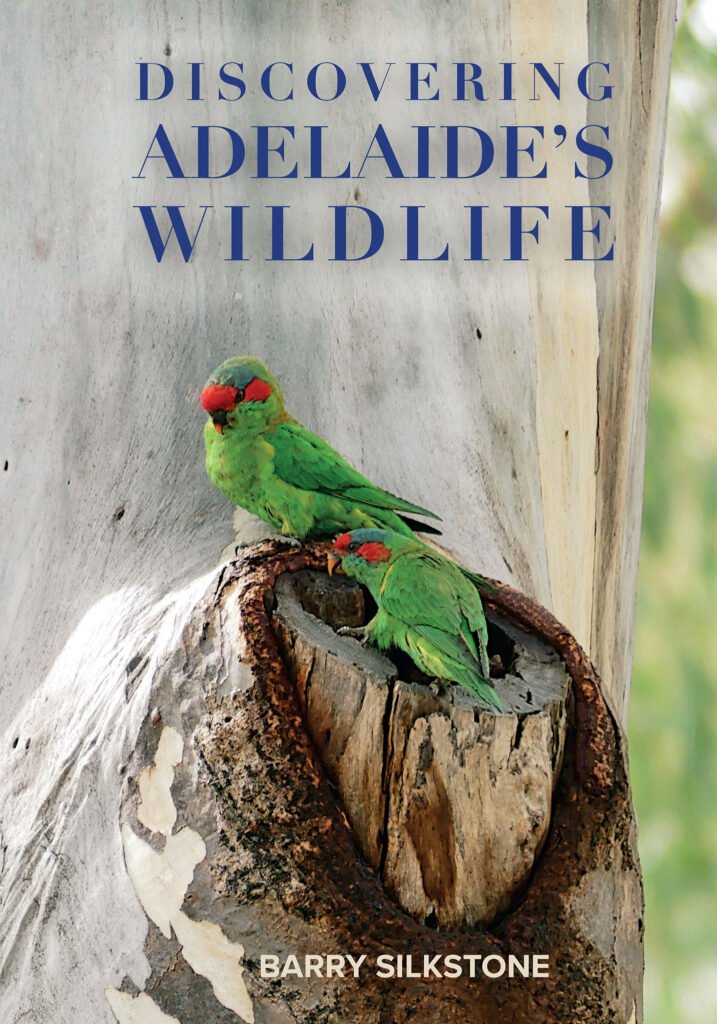Discovering Natural Habitats in Adelaide: A Comprehensive Guide
5 months ago

Adelaide, the coastal capital of South Australia, is renowned for its vibrant culture, delectable cuisine, and stunning architecture. However, one of the city's most significant and often overlooked treasures lies in its remarkable natural habitats. From coastal areas teeming with marine life to lush parks and reserves in the hinterland, Adelaide offers a diverse range of ecosystems that support a multitude of flora and fauna. These natural environments not only provide recreational opportunities for residents and visitors alike but also play a vital role in preserving biodiversity and promoting environmental sustainability.
Understanding the natural habitats in Adelaide is crucial for appreciating the unique beauty and ecological importance of the region. The varied landscapes, including sandy beaches, wetlands, and woodlands, serve as home to numerous species, some of which are endemic and vulnerable. The conservation of these habitats is imperative for maintaining ecological balance, promoting tourism, and enhancing the quality of life for all who inhabit this beautiful city. In this article, we will delve into the different types of natural habitats found in and around Adelaide, exploring their characteristics, significance, and the conservation efforts undertaken to protect them.
Coastal Habitats: Beaches and Marine Ecosystems
The coastal habitats surrounding Adelaide are among its most stunning natural features. The sandy beaches along the city’s coastline not only offer picturesque views but also support a thriving marine ecosystem. These environments are highly dynamic, influenced by tides, weather patterns, and human activity. The beaches, such as Glenelg, Henley Beach, and Brighton Beach, stretch for several kilometers and are characterized by their golden sands and rolling waves, creating the ideal backdrop for recreational activities like swimming, surfing, and fishing.
These coastal habitats play a critical role in supporting marine biodiversity. The waters off Adelaide's coast are home to a variety of fish species, including snapper, bream, and whiting, as well as an array of invertebrates like crabs and mollusks. Moreover, the underwater ecosystems, including seagrass beds and reefs, provide essential habitats for marine life. They serve as breeding grounds for fish, nurseries for juvenile species, and feeding areas for larger marine animals like dolphins and the occasional whale. Protecting these habitats ensures the sustainability of marine resources and preserves the delicate balance of the ecosystem.
Wetland Areas: River Torrens and Surrounding Marshlands
Wetlands are critical components of Adelaide’s natural habitats, serving as vital ecosystems that filter nutrients, store floodwaters, and provide habitat for wildlife. One of the most significant wetland areas in Adelaide is the River Torrens, which flows through the heart of the city, connecting a variety of habitats. The riverbanks are adorned with native vegetation that not only stabilizes the soil but also provides habitat for numerous birds, reptiles, and amphibians.
The wetlands adjacent to the River Torrens are rich in biodiversity, drawing in various bird species, including migratory birds that stop during their long journeys. The presence of ecologically important species, such as the Eastern Long-necked Turtle and the platypus, underscores the health of the wetland ecosystem. These wetland habitats also demonstrate the importance of freshwater systems to the overall ecological balance, highlighting the need for responsible water management practices and rehabilitation efforts to ensure their protection.
Woodland and Forest Habitats: Parks and Reserves
Adelaide and its surrounding regions boast an array of woodland and forest habitats that are essential for maintaining the city’s ecological integrity. Parks such as Belair National Park and Cleland Conservation Park are prime examples of preserved woodland areas that showcase a mix of native flora and fauna. These parks are characterized by their dense stands of eucalyptus trees, which provide habitat and food sources for various species, including koalas, kangaroos, and numerous bird species.
The diverse woodland habitats found in these parks support complex ecosystems with intricate food webs. The understorey of shrubs and grasses vital for ground-dwelling species, while the canopy provides shelter for arboreal animals. These forests also play a fundamental role in carbon sequestration, helping to mitigate climate change and enhance air quality. Moreover, they offer locals and tourists recreational opportunities, such as hiking, picnicking, and wildlife observation, fostering a deeper appreciation for the natural world.
The Importance of Biodiversity in Adelaide’s Habitats
Biodiversity is a critical component of all natural habitats in Adelaide. It not only contributes to the resilience of ecosystems but also provides significant benefits to humanity. The rich variety of species found in Adelaide's habitats contributes to pharmaceuticals, agricultural practices, and natural resources. For instance, numerous native plants are known for their medicinal properties, showcasing the direct link between biodiversity and human health.
Additionally, maintaining biodiversity enhances the ecological functions necessary for supporting life. Pollinators, such as bees and butterflies, play an essential role in plant reproduction and food production, while predatory species help control pest populations. The interconnectedness of these species underscores the need for conservation efforts aimed at protecting Adelaide's habitats, including initiatives focused on restoring degraded areas and managing invasive species that threaten native wildlife.
Urban Green Spaces: Integrating Nature within the City
As urbanization continues to expand, the integration of natural habitats within the city becomes increasingly important. Adelaide is home to numerous parks, gardens, and green corridors that contribute to the city’s ecological network. These urban green spaces not only enhance the livability of the city but also provide critical habitats for wildlife. Parks like the Adelaide Botanic Garden and Victoria Park serve as important sanctuaries for birds and small mammals, showcasing a variety of native plants and landscaping that supports local biodiversity.
Moreover, urban green spaces play a significant role in improving air quality, reducing urban heat island effect, and managing stormwater runoff. Various studies have shown that the presence of green spaces in urban settings has psychological benefits for residents, including reducing stress and improving overall well-being. The promotion of native vegetation in these areas is essential, as it encourages the establishment of habitats for local wildlife and reinforces the connection between urban dwellers and their natural environment.
Conservation Efforts for Adelaide's Natural Habitats
Conserving and managing the natural habitats in Adelaide require coordinated efforts at local, state, and national levels. Various government agencies, non-profit organizations, and community groups are actively involved in conservation initiatives aimed at protecting and restoring these diverse ecosystems. Programs such as the Adelaide and Mount Lofty Ranges Natural Resources Management Board focus on collaborative approaches to conserve native habitats, manage invasive species, and monitor ecological health.
Community engagement is crucial for the success of these conservation efforts. Educational programs and volunteer opportunities allow residents to participate in habitat restoration projects, including planting native species and participating in clean-up efforts along the coast and rivers. These initiatives encourage a sense of stewardship and responsibility toward protecting Adelaide’s natural heritage, fostering a culture of conservation that extends to future generations.
Challenges Facing Natural Habitats in Adelaide
Despite the ongoing efforts to conserve and protect Adelaide's natural habitats, numerous challenges threaten their sustainability. Urbanization, climate change, and invasive species pose significant threats to these ecosystems. The expansion of urban areas often leads to habitat destruction and fragmentation, diminishing the available space for wildlife to thrive. Additionally, altered climate patterns may affect seasonal behaviors of flora and fauna, disrupting ecological relationships and potentially leading to species decline.
Invasive species, both terrestrial and aquatic, further exacerbate these challenges. They often outcompete native species for resources, which can lead to declines in biodiversity. For example, feral cats pose a significant risk to native bird populations, while introduced fish species can disrupt aquatic ecosystems. Addressing these challenges requires proactive management strategies, including habitat restoration, strategic removal of invasive species, and ongoing research to inform effective conservation actions.
Promoting Sustainable Practices within Natural Habitats
Encouraging sustainable practices within natural habitats is vital for ensuring their long-term health and resilience. Education and awareness campaigns play a crucial role in promoting responsible behavior among residents and visitors, emphasizing the importance of protecting wildlife and preserving natural areas. Simple actions, such as disposing of waste properly, minimizing disturbance to wildlife, and using native plants in gardens, can make a significant impact on the health of local habitats.
Moreover, sustainable tourism practices help ensure that natural habitats are not overexploited. Programs focusing on responsible outdoor recreation can guide activities such as hiking, birdwatching, and fishing, minimizing the impact on sensitive areas. By fostering a deeper connection to nature, individuals are more likely to become advocates for conservation, leading to collective efforts to protect and restore natural habitats throughout the region.
The Future of Natural Habitats in Adelaide
The future of Adelaide's natural habitats hinges on continued awareness, active participation, and innovative conservation strategies. As the city grows and evolves, it is imperative to strike a balance between development and environmental stewardship. Incorporating green infrastructure and sustainable design into urban planning can enhance habitat connectivity while providing essential ecosystem services to residents.
Collaboration across various sectors, from government to community groups and private enterprises, will be critical for advancing conservation objectives and responding to emerging threats. The integration of scientific research and traditional ecological knowledge can inform effective management practices, ensuring that natural habitats are preserved for future generations. The success of these efforts will ultimately depend on fostering a culture of respect and care for the environment, recognizing that the health of these habitats is intrinsically linked to the quality of life for all who call Adelaide home.
Conclusion
Adelaide's rich tapestry of natural habitats represents a unique ecological treasure that deserves appreciation and protection. The diverse coastal environments, wetlands, woodlands, and urban green spaces are critical for supporting biodiversity and enhancing the overall quality of life in the city. While challenges such as urbanization and climate change persist, concerted conservation efforts by individuals, communities, and organizations provide hope for preserving these precious ecosystems.
To truly reap the benefits of Adelaide's natural habitats, it is essential to engage in sustainable practices, promote awareness, and participate in conservation efforts. By embracing a collective responsibility for safeguarding these environments, we can ensure that they thrive for generations to come, allowing both the people of Adelaide and the incredible wildlife that inhabit the region to flourish together.

Leave a Reply